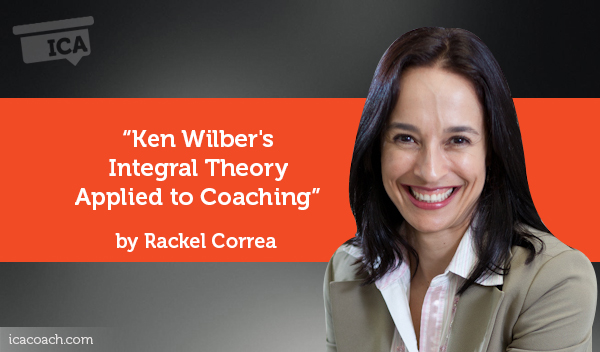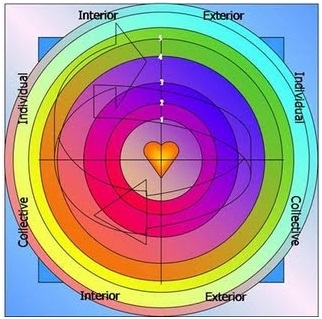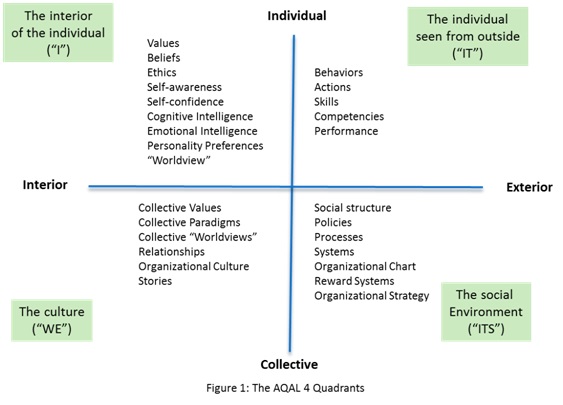 Research Paper By Rackel Correa
Research Paper By Rackel Correa
(Executive Coach, BRAZIL)

-
Introduction
The International Coach Federation (ICF) defines coaching as “partnering with clients in a thought-provoking and creative process that inspires them to maximize their personal and professional potential”.
Coaching is about enabling and sustaining effective change as we develop into improved versions of ourselves. At its core, it is about maximizing Human Development.
In this work, we present Ken Wilber’s Integral Model (AQAL Model – 1996), and explore how this theory can be applied to the coaching process.
Ken Wilber’s AQAL Theory is considered by many contemporary philosophers to be the best foundation for an Integral Theory of Human Development. By providing a wide examination of perspectives, it offers a framework that perfectly fits to the Coaching Process.
-
The Integral Theory
Integral means inclusive, comprehensive, whole. When applied to a research methodology it illustrates the intent to cover as many perspectives as possible.
The AQAL Model is the basic framework of Wilber’s Integral Theory. AQAL stands for All Quadrants, All Levels. It considers that any occasion has four perspectives: the inside and the outside of the individual and the collective.
Figure 1 shows the AQAL diagram illustrating the four quadrants:
 The Upper-left quadrant contains the individual’s interior experiences: thoughts, emotions, memories from past experiences, states of mind, perceptions, and immediate sensations. It is called the ‘I’ space, and covers the interior individual aspects of experience. It relates to the subjective aspects of the consciousness, or individual perception.
The Upper-left quadrant contains the individual’s interior experiences: thoughts, emotions, memories from past experiences, states of mind, perceptions, and immediate sensations. It is called the ‘I’ space, and covers the interior individual aspects of experience. It relates to the subjective aspects of the consciousness, or individual perception.
The Upper-right quadrant covers what an individual looks like from the outside. In this dimension we have the actions, language, skills, competencies, body language. This quadrant is called the “IT” space. In Wilber’s theory it also includes the physical aspects of the individual: brain, body – but we will focus on the behavioral part in this work.
The Lower-left quadrant represents the group or collective consciousness. It describes the cultural world space where the individual is inserted, and includes the shared values, shared feelings, shared beliefs, and worldviews. It is called “WE” space.
The Lower-right quadrant represents the social dimension where the individual lives, which includes how people are organized, the policies and procedures, conduct code, economic and social context. It is called “ITS” space.
According to Wilber, an issue in any quadrant will affect all four quadrants, because every human being context has these four facets inter-related. Thus, an integral view needs to take all of those dimensions into account, to get to a more effective approach to sustainable development.
If we always look at an issue or challenge from one perspective, this might limit the understanding of the issue, and therefore the solution opportunities.
-
Lines of Development
Each of the four quadrants has a path of evolution, and Ken Wilber’s theory explores in details the development in all these dimensions.
For the purpose of coaching we will focus on the personal development. This means that we will work on the evolution of the upper-left quadrant, though using an integral approach by taking into consideration the influence of the other three quadrants on this process.